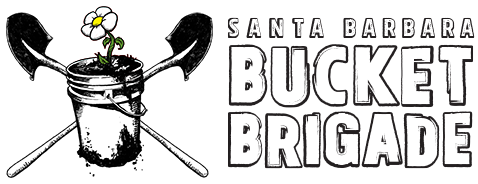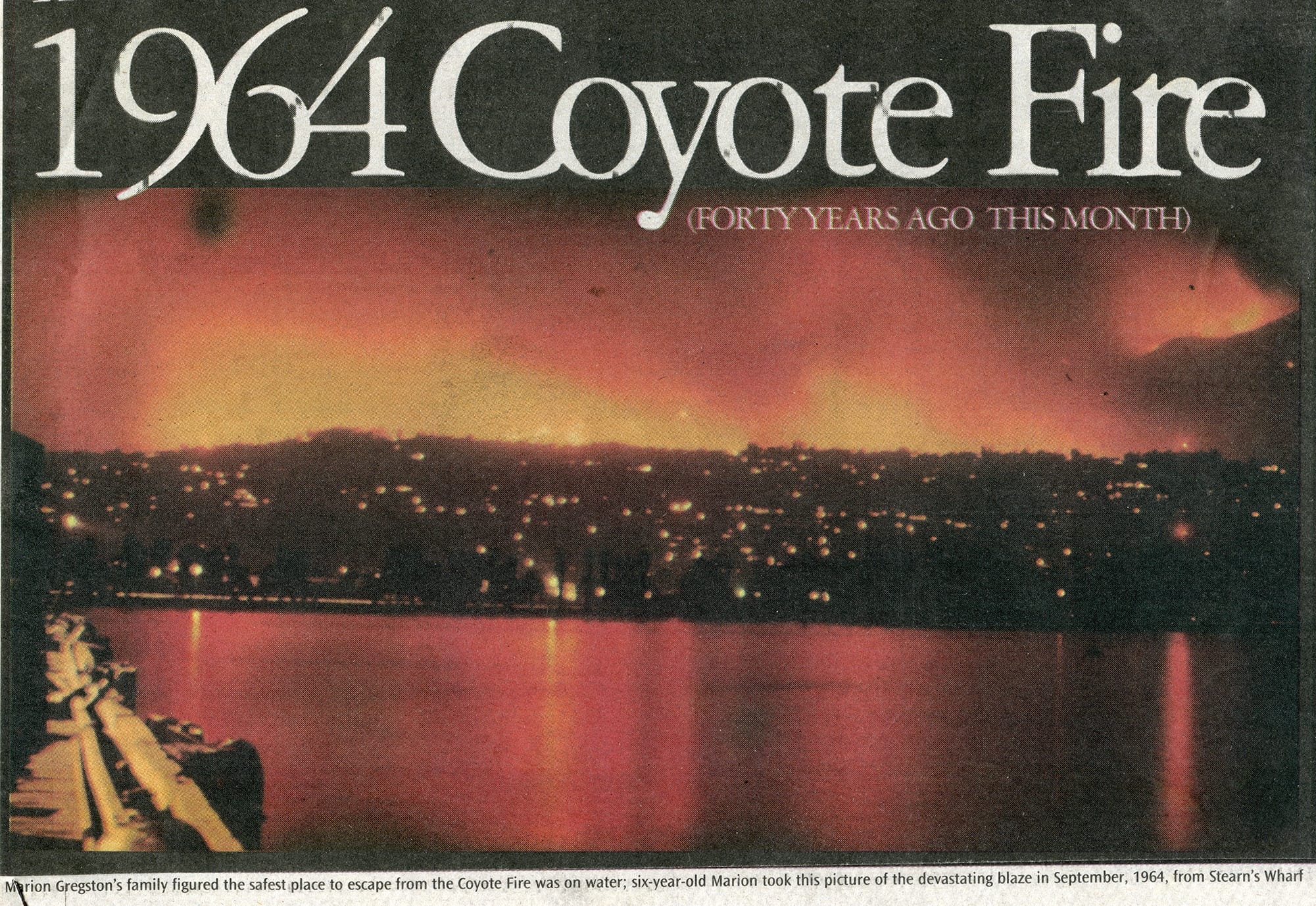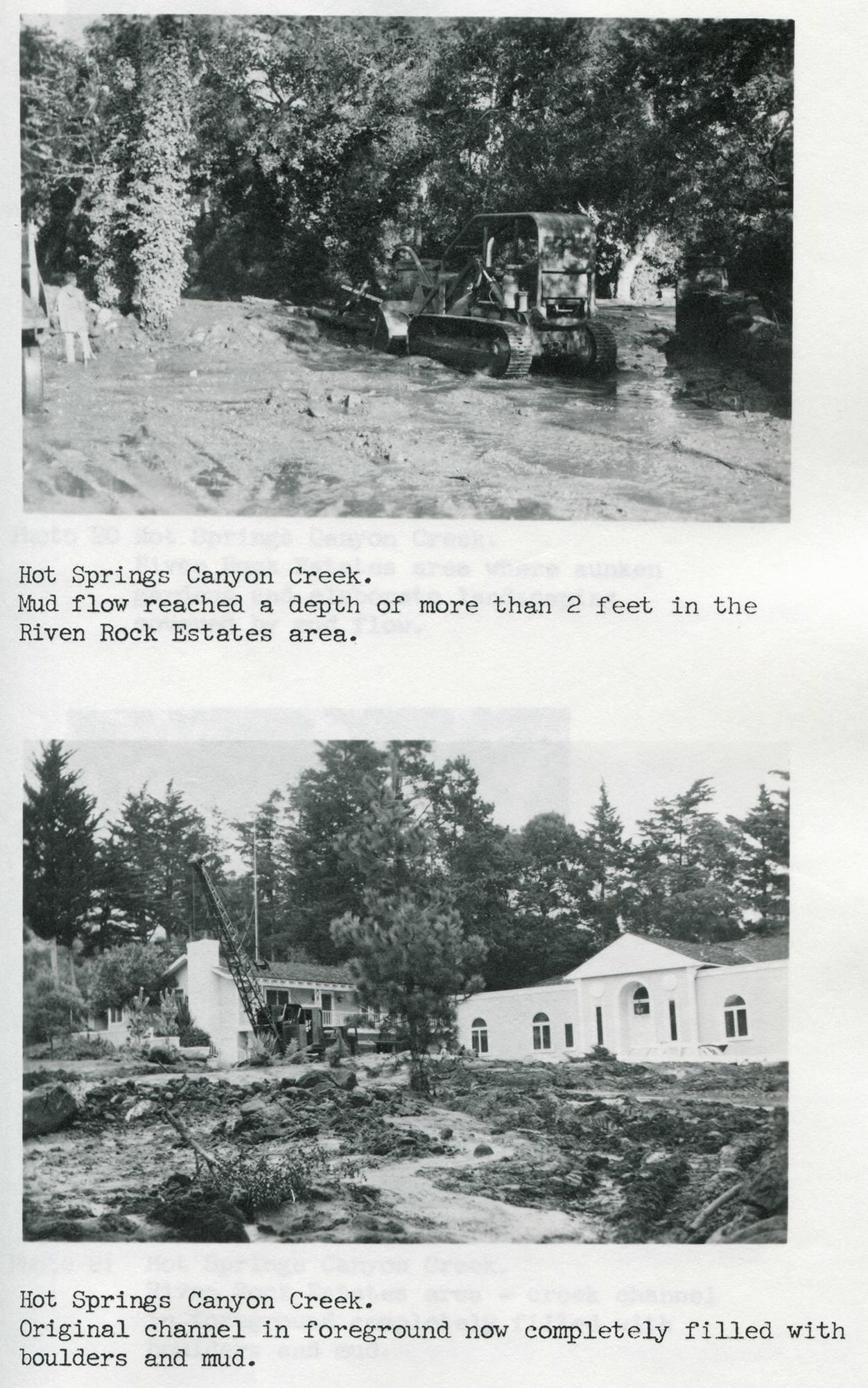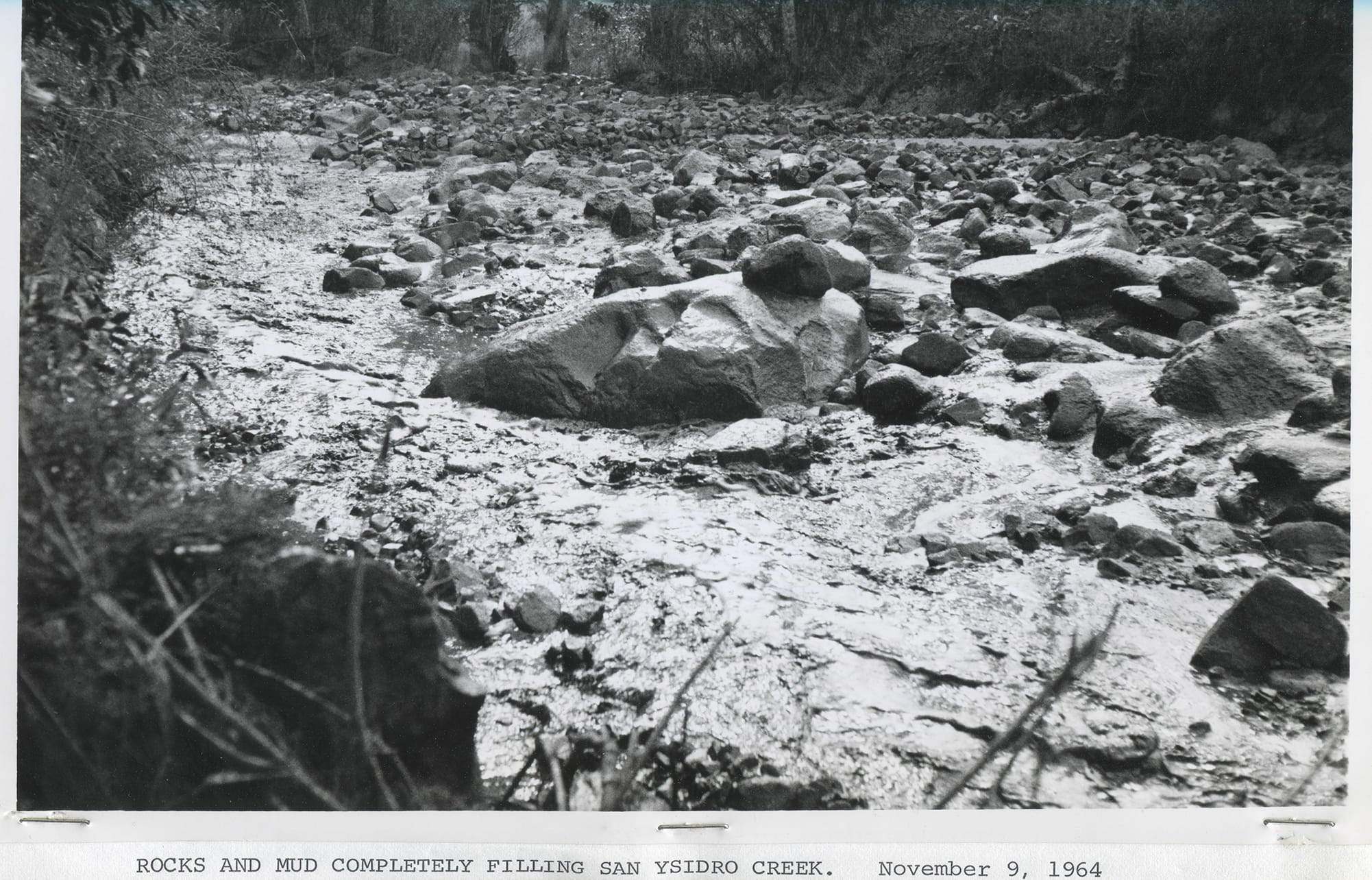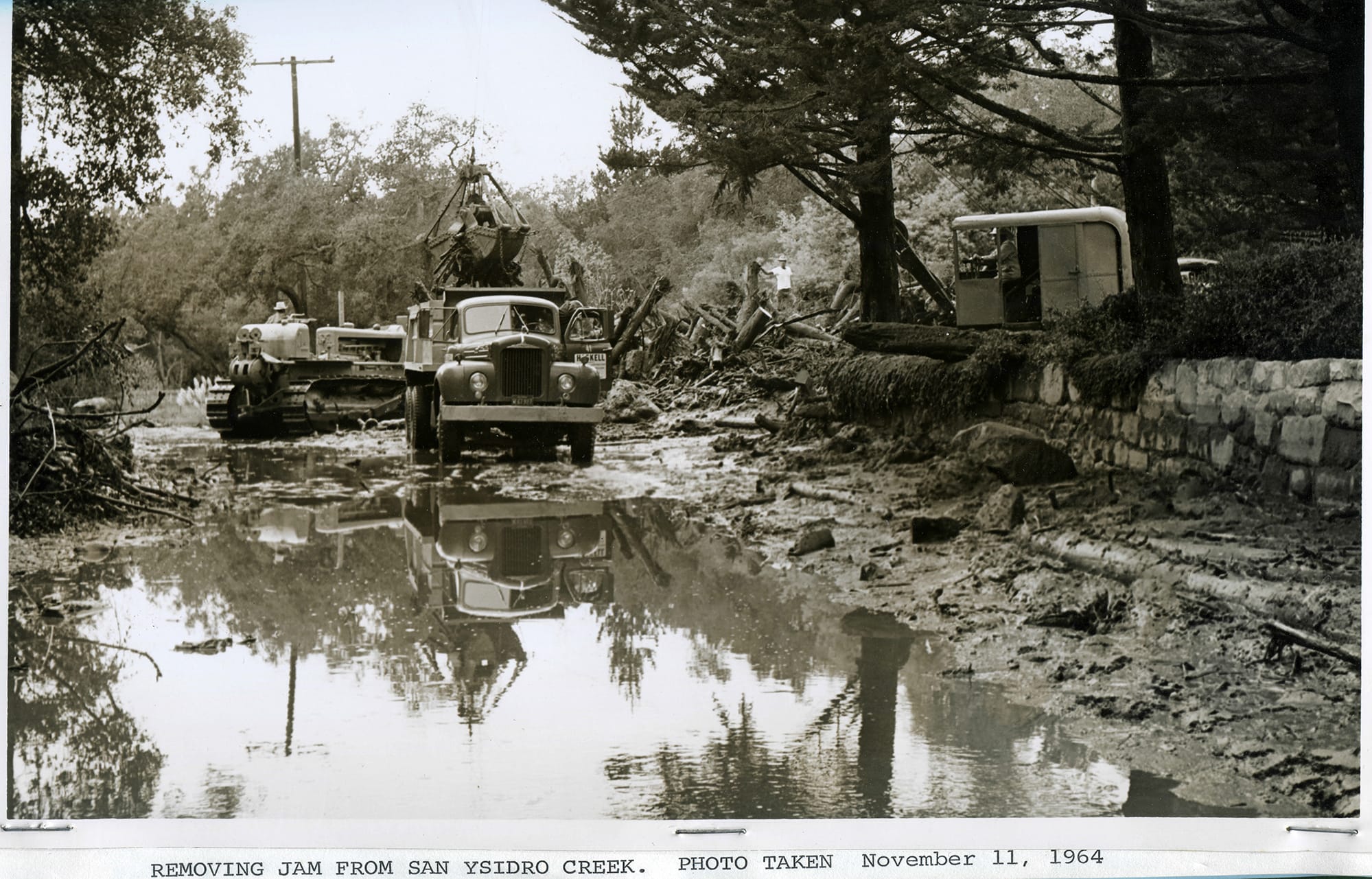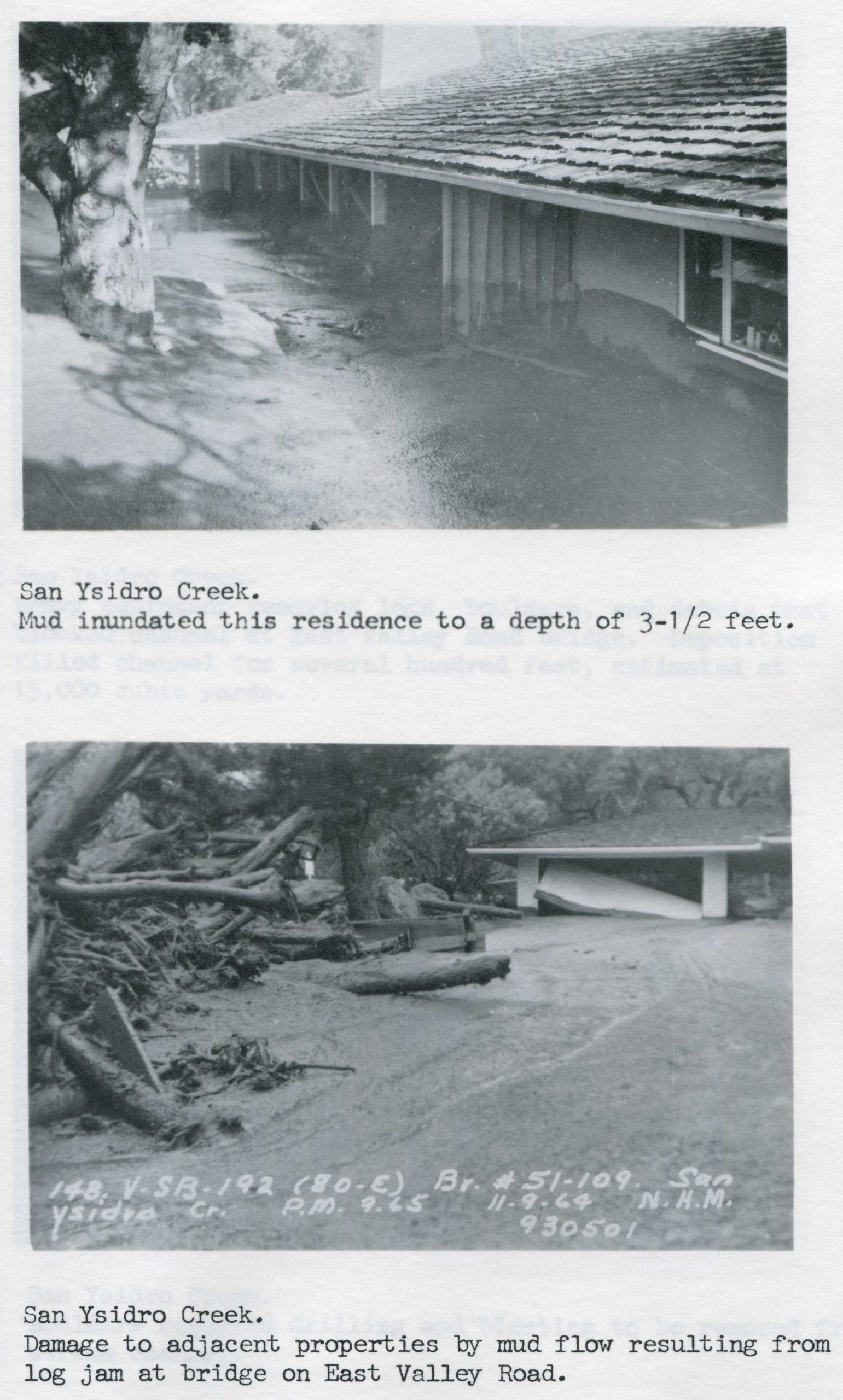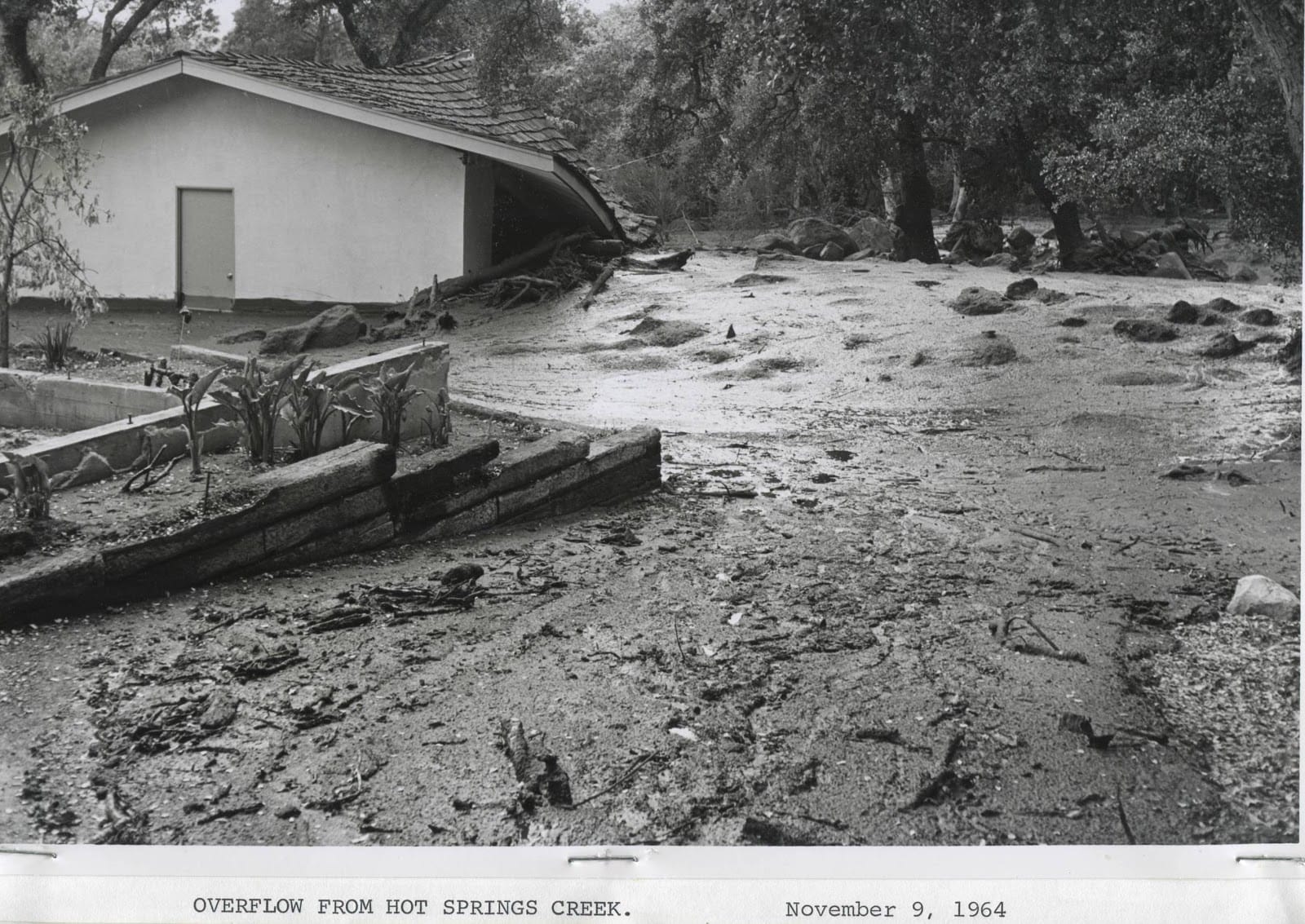The Coyote Fire began on September 22, off Coyote Road, east of Sycamore Canyon, and burned for 10 days before being declared under control. The wildfire’s maximum perimeter was 160 miles and a total of 67,000 acres were burned, 21,000 of which was private land. There was one reported death and 18 injuries, as well as 85 burned homes. Roughly 30,000 acres of the burned area were in the south-slope mountain drainages at risk for subsequent debris flows.
Just over a month later, on November 9, a rain burst of upward of 1.15 inches caused severe flooding of Cold Spring, Hot Springs, Montecito, and San Ysidro creeks. Eye witnesses in Cold Spring Canyon reported 20-foot walls of water, mud, rocks, and logs rushing at 15 miles per hour. Bridges that were not immediately swept away became clogged with logs and rocks, forcing backed-up water and debris to move laterally through nearby residential areas, causing severe damage. While devastating, some of the damaging effects of the flood were greatly mitigated by previous channel-clearing efforts conducted by the Army Corps of Engineers.
Montecito Creek become plugged under a bridge at Hot Springs Road, forcing the debris-latten water to flow down Hot Springs and Olive Mill roads. The flow continued down into the Lower Village, where it damaged commercial buildings and crossed the overpass to spill into streets on the south side of Highway 101.
Higher up, Hot Springs Creek backed up and diverted into the Riven Rock neighborhood, causing damage to landscaping and garages. San Ysidro Creek also backed up, pushing a deep mudflow onto East Valley Road.
